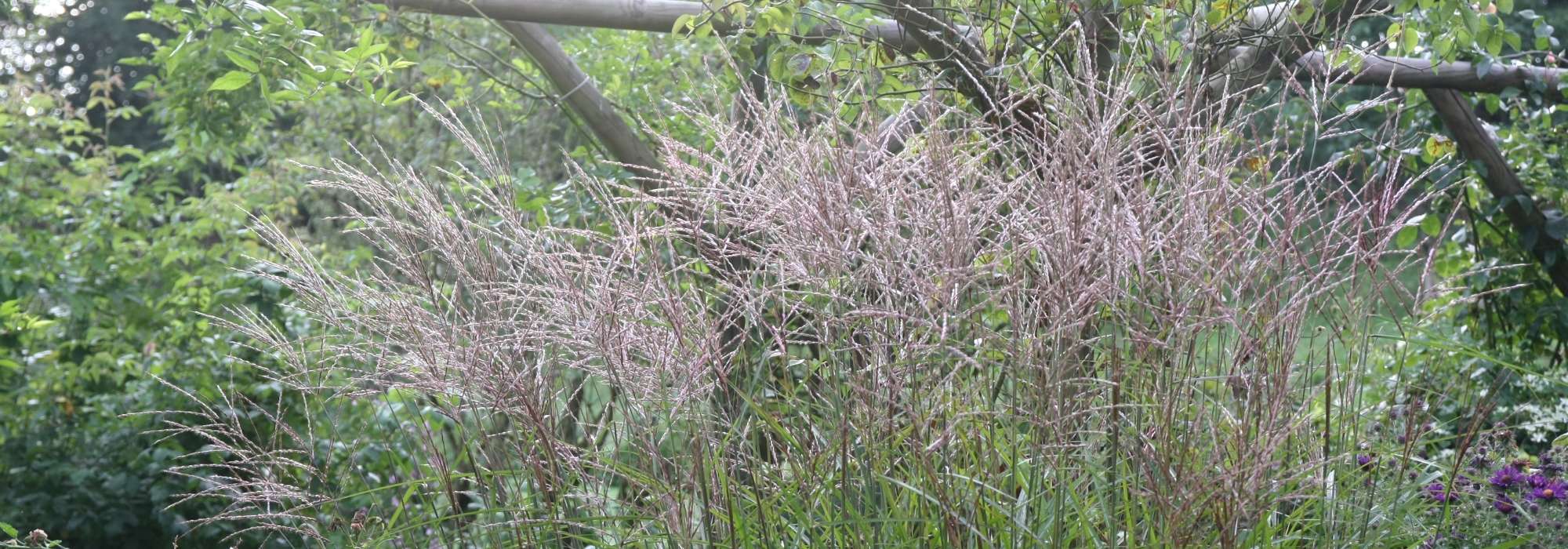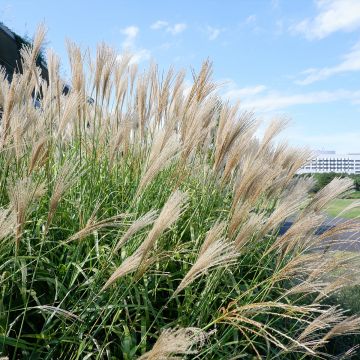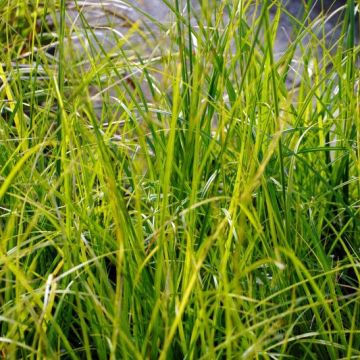

Miscanthus nepalensis


Miscanthus nepalensis
Miscanthus nepalensis
Miscanthus nepalensis
Himalayan fairy Grass, Nepal silver Grass
The 3 young plants have taken root without any issues and are starting to shoot. Too bad the order was limited to 3 plants.
Christophe, 01/04/2025
Special offer!
Receive a €20 voucher for any order over €90 (excluding delivery costs, credit notes, and plastic-free options)!
1- Add your favorite plants to your cart.
2- Once you have reached €90, confirm your order (you can even choose the delivery date!).
3- As soon as your order is shipped, you will receive an email containing your voucher code, valid for 3 months (90 days).
Your voucher is unique and can only be used once, for any order with a minimum value of €20, excluding delivery costs.
Can be combined with other current offers, non-divisible and non-refundable.
Home or relay delivery (depending on size and destination)
Schedule delivery date,
and select date in basket
This plant carries a 12 months recovery warranty
More information
We guarantee the quality of our plants for a full growing cycle, and will replace at our expense any plant that fails to recover under normal climatic and planting conditions.
Would this plant suit my garden?
Set up your Plantfit profile →
Description
Miscanthus nepalensis is a grass native to Nepal that stands out with its delicate flowering and modest stature, making it ideal for small gardens and container gardening. It has flexible foliage that gives it a graceful fountain-like habit. In summer, it is adorned with elegant, curved inflorescences that start off golden and glistening, before turning almost white at maturity while acquiring a beautiful woolly appearance. The plant remains decorative throughout winter. The remnants of its vegetation topped with woolly inflorescences bring a real charm to the garden, especially under frost. Romantic, sculptural, and wild, this lovely grass works in any style of garden. Just place it in the sun in light and well-drained soil that retains some moisture in summer.
Miscanthus nepalensis is a perennial plant of the Poaceae family. It is of Himalayan origin. It is hardy to -8 to -10°C (17.6 to 14°F), and appreciates well-drained soils that are not too dry in summer. This grass forms a beautiful clump of dense and flexible leafy stems, reaching 1.2m (4ft) in height when flowering, 70cm (28in) for the foliage, and occupying about 60cm (24in) of space on the ground. Its growth rate is quite fast, but it takes two or three years for the plant to reach its full potential. The foliage is quite broad, and remains green for most of the year (until January). It is composed of ribbon-like, flexible leaves, of a medium green colour. Flowering begins in July-August, emerging well above the foliage, at the tips of numerous slender but stiff culms. It takes the form of cascading, golden, pearly and glistening inflorescences, swaying in the wind. They bear feathery, almost white fruits, forming a wool-like appearance. These inflorescences persist for many months. This plant undoubtedly offers one of the most beautiful flowers in the miscanthus genus. It is not invasive.
Less known than its tall cousin, Miscanthus sinensis, M. nepalensis deserves to be planted more often in our gardens, including small ones. It is also absolutely stunning on a patio. It can be used in a natural-inspired flower bed, for example with dark cosmos, centaureas, or ornamental garlic. It can also be combined with taller varieties such as Miscanthus 'Goliath', at the edge of the garden. Take advantage of its fountain-like habit by placing it on a slightly elevated area, such as a large bank or a hill, paired with autumn bloomers like asters (Aster laevis 'Calliope', A. turbinellus, A. cordifolius) or sunflowers (Helianthus maximiliani, H. salicifolius, H. atrorubens). It pairs well with perovskias and fox tail amaranths, autumn daisies, and Japanese anemones.
Miscanthus nepalensis in pictures




Flowering
Foliage
Plant habit
Botanical data
Miscanthus
nepalensis
Poaceae
Himalayan fairy Grass, Nepal silver Grass
Himalayas
Other Miscanthus
View all →Planting and care
Miscanthus nepalensis is best planted in spring. While it is hardy to about -12 to -15°C (10.4 to 5°F) once well established, young plants may suffer from cold during the first two years. Plant them in well-drained soil. Monitor watering to help the plants establish. Mulch the base during winter for two years. This miscanthus thrives in warm exposures and healthy, fairly rich, deep, well-drained soil that remains slightly moist in summer. It tolerates poor soils, but its growth will be slower and less spectacular. Prune the flower stalks in spring to avoid exhausting the plant. If you are cultivating it in a pot, it will need regular watering and a spring fertiliser application.
Planting period
Intended location
Care
Planting & care advice
-
, onOrder confirmed
Reply from on Promesse de fleurs
Similar products
Haven't found what you were looking for?
Hardiness is the lowest winter temperature a plant can endure without suffering serious damage or even dying. However, hardiness is affected by location (a sheltered area, such as a patio), protection (winter cover) and soil type (hardiness is improved by well-drained soil).

Photo Sharing Terms & Conditions
In order to encourage gardeners to interact and share their experiences, Promesse de fleurs offers various media enabling content to be uploaded onto its Site - in particular via the ‘Photo sharing’ module.
The User agrees to refrain from:
- Posting any content that is illegal, prejudicial, insulting, racist, inciteful to hatred, revisionist, contrary to public decency, that infringes on privacy or on the privacy rights of third parties, in particular the publicity rights of persons and goods, intellectual property rights, or the right to privacy.
- Submitting content on behalf of a third party;
- Impersonate the identity of a third party and/or publish any personal information about a third party;
In general, the User undertakes to refrain from any unethical behaviour.
All Content (in particular text, comments, files, images, photos, videos, creative works, etc.), which may be subject to property or intellectual property rights, image or other private rights, shall remain the property of the User, subject to the limited rights granted by the terms of the licence granted by Promesse de fleurs as stated below. Users are at liberty to publish or not to publish such Content on the Site, notably via the ‘Photo Sharing’ facility, and accept that this Content shall be made public and freely accessible, notably on the Internet.
Users further acknowledge, undertake to have ,and guarantee that they hold all necessary rights and permissions to publish such material on the Site, in particular with regard to the legislation in force pertaining to any privacy, property, intellectual property, image, or contractual rights, or rights of any other nature. By publishing such Content on the Site, Users acknowledge accepting full liability as publishers of the Content within the meaning of the law, and grant Promesse de fleurs, free of charge, an inclusive, worldwide licence for the said Content for the entire duration of its publication, including all reproduction, representation, up/downloading, displaying, performing, transmission, and storage rights.
Users also grant permission for their name to be linked to the Content and accept that this link may not always be made available.
By engaging in posting material, Users consent to their Content becoming automatically accessible on the Internet, in particular on other sites and/or blogs and/or web pages of the Promesse de fleurs site, including in particular social pages and the Promesse de fleurs catalogue.
Users may secure the removal of entrusted content free of charge by issuing a simple request via our contact form.
The flowering period indicated on our website applies to countries and regions located in USDA zone 8 (France, the United Kingdom, Ireland, the Netherlands, etc.)
It will vary according to where you live:
- In zones 9 to 10 (Italy, Spain, Greece, etc.), flowering will occur about 2 to 4 weeks earlier.
- In zones 6 to 7 (Germany, Poland, Slovenia, and lower mountainous regions), flowering will be delayed by 2 to 3 weeks.
- In zone 5 (Central Europe, Scandinavia), blooming will be delayed by 3 to 5 weeks.
In temperate climates, pruning of spring-flowering shrubs (forsythia, spireas, etc.) should be done just after flowering.
Pruning of summer-flowering shrubs (Indian Lilac, Perovskia, etc.) can be done in winter or spring.
In cold regions as well as with frost-sensitive plants, avoid pruning too early when severe frosts may still occur.
The planting period indicated on our website applies to countries and regions located in USDA zone 8 (France, United Kingdom, Ireland, Netherlands).
It will vary according to where you live:
- In Mediterranean zones (Marseille, Madrid, Milan, etc.), autumn and winter are the best planting periods.
- In continental zones (Strasbourg, Munich, Vienna, etc.), delay planting by 2 to 3 weeks in spring and bring it forward by 2 to 4 weeks in autumn.
- In mountainous regions (the Alps, Pyrenees, Carpathians, etc.), it is best to plant in late spring (May-June) or late summer (August-September).
The harvesting period indicated on our website applies to countries and regions in USDA zone 8 (France, England, Ireland, the Netherlands).
In colder areas (Scandinavia, Poland, Austria...) fruit and vegetable harvests are likely to be delayed by 3-4 weeks.
In warmer areas (Italy, Spain, Greece, etc.), harvesting will probably take place earlier, depending on weather conditions.
The sowing periods indicated on our website apply to countries and regions within USDA Zone 8 (France, UK, Ireland, Netherlands).
In colder areas (Scandinavia, Poland, Austria...), delay any outdoor sowing by 3-4 weeks, or sow under glass.
In warmer climes (Italy, Spain, Greece, etc.), bring outdoor sowing forward by a few weeks.




























































